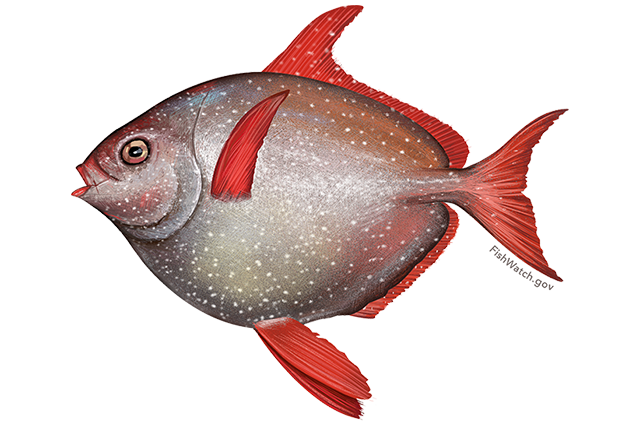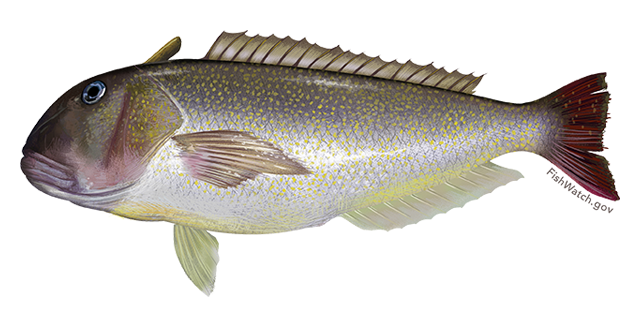Part 14: Enforcement and Monitoring
Civil and Criminal Enforcement under the MSA
Fishery management plans, amendments, interim rules, or emergency actions, are enforceable once final (typically indicated by publication in the Federal Register), and violations can be punished. The NOAA statutes and regulations are enforced by NMFS law enforcement agents, the U.S. Coast Guard, cooperating state law enforcement officials, and other federal agents. Some violations, including resisting arrest and interfering with an officer, are subject to criminal sanctions as well as civil sanctions. Criminal sanctions may include fines and/or jail. The amount of the penalty depends on the seriousness of the violation, which includes the history of other violations. The base penalties are adjusted for inflation. As of 2019, the penalties were authorized to range from $2,500 to $120,000.
Enforcement actions follow a process, typically beginning with a notice of the violation. Notices may be given in person or by certified mail, fax, email, or commercial delivery service.
 Opah
Opah
Notice of Violation and Assessment (NOVA)
Enforcement under the MSA may be done by issuing a Notice of Violation and Assessment (NOVA). Violations are subject to civil sanctions that include:
- Written warnings;
- Fines imposed by Notices of Violation and Assessment (NOVA);
- Forfeiture of seized property including catch, vessels, and equipment;
- Permit sanctions, including cancelling vessel/operator permits, imposed by a Notice of Permit Sanction (NOPS); and/or
- Prohibiting access to fisheries, or restricting harvests.
The amount of a penalty is assessed based on how harmful the offense was and how responsible the violator was for the harm. These are charted in NOAA’s Penalty Matrix under the MSA.
Instead of a NOVA, a fisher may receive a warning, which has less severe consequences than a notice. A written warning will give the factual legal bases for the warning and explains the right to review or appeal by a NOAA attorney. If the NOAA attorney affirms the warning, the violator may appeal to the NOAA Deputy General Counsel. The Deputy General Counsel’s decision is a final agency action.
In some cases a summary settlement ticket with a discounted fine may be offered to a fisher prior to issuing a NOVA. If the violation is not contested, the fisher may choose to pay this penalty to resolve the case without incurring the expense of the legal process. The fisher forfeits his or her interest in any property that was seized by paying the penalty.
If a fisher chooses not to resolve the case under a summary settlement ticket, the case will be forwarded to NOAA’s Office of General Counsel for issuance of a NOVA. NOVAs are issued by NOAA’s Office of General Counsel typically to the owner and/or captain of a vessel. A NOVA will contain:
- A concise statement of the facts believed to show a violation;
- A specific reference to the provisions of the Act, regulation, license, permit, agreement, or order allegedly violated;
- The findings and conclusions upon which NOAA bases the assessment;
- The amount of civil penalty assessed.
The NOVA will also advise fishers of their rights, allowing 30 days from the receipt of the NOVA for the fisher to do one of the following:
- Accept the penalty or compromise penalty, if any, by taking the actions specified in the NOVA;
- Seek to have the NOVA amended, modified, or repealed;
- Request, in writing, a hearing;
- Request an extension of time to respond;
- Take no action, in which case the NOVA becomes final.
Revocation of Permit Case
In a case where the owner of nine corporations that trawled for shrimp in the Gulf of Mexico was cited for not using turtle-excluder and bycatch reduction devices, the owner claimed he did not receive the NOVA. His request for a hearing was more than two years late. When he did not pay the penalty, his permits were revoked. The court of appeals upheld the charges and penalties. Gonzalez v. U.S. Department of Commerce, 420 Fed. Appx. 364 (5th Cir. 2011).
Administrative Hearing
A hearing is before an administrative law judge (ALJ), who is employed by the Environmental Protection Agency, and thus, is independent of the investigation. The administrative hearing is similar to a trial, with witnesses giving testimony, and the production of evidence. No jury is allowed, however. The required procedure is outlined in the regulations: 15 C.F.R. part 904. The ALJ decision may be appealed to the NOAA Administrator. The decision of the NOAA Administrator may be appealed to a federal district court, and from there, a federal court of appeals.
The administrative process can take a lot of time. In one case involving a charge that a lobstering vessel was fishing in a closed area, the final court of appeals decision came 17 years after the original charges. Frontier Fishing Corp. v. Pritzker, 770 F.3d 58 (1st Cir. 2014) (finding that despite “extensive and complicated facts [that] do not all neatly fit together” NOAA had sufficient support for the charges).
Once a penalty has become final, failing to pay it has severe consequences, such as:
- Denial or revocation of fishing permits;
- Imposition of a maritime lien against the vessel used in the violation;
- Filing a collection action in federal district court;
- Assertion of the maritime lien (resulting in seizure and sale of the vessel to pay the penalties assessed, plus interest, non-payment penalty, and an administrative fee);
- Reporting the debt to the Internal Revenue Service (IRS) for tax offset; and/or
- Reporting the debt as income to the IRS.
Lawsuits Challenging Civil Penalties
Courts have upheld civil penalties brought against commercial fishers for MSA violations, even the suspension of permits, meaning the fisher could not fish for that period of time. Repetitive violations justify higher penalties. In one case involving suspended permits, the fisher lost his vessel/operator permits for 48 months and was fined $100,000 after submitting a forged renewal for a permit and then being caught fishing while under suspension. It was the fourth time in five years that he had been found violating the MSA. Duckworth v. United States, 418 Fed. Appx. 2 (D.C. Cir. 2011). In a different case another court found a $152,000 penalty was not excessive for violations including stealing lobsters from another’s traps. The fine was assessed by an ALJ and affirmed by the Third Circuit Court of Appeals. Salisbury v. United States, 368 Fed. Appx. 310 (3d Cir. 2010). NMFS set up a sting operation after getting complaints from multiple lobster fishers that Salisbury was taking their lobsters. NMFS set up its own traps with unique IDs and traced them to Salisbury.
Enforcers of the various statutes and regulations administered by NOAA have the authority to seize property, such as the catch, fishing equipment, and/or the vessel. Property may be seized and held as evidence and, depending on the law, may be subject to forfeiture to the United States. NOAA’s Office of General Counsel issues notices of proposed forfeiture, which describe the seized property, giving the time, place and reason for the seizure and the rights of an interested person to file a claim to the property.
 Golden Tilefish
Golden Tilefish
Permit Sanctions: NOPS and NIDP
NOAA may also sanction or deny a fishing permit under a Notice of Permit Sanction (NOPS) or Notice of Intent to Deny Permit (NIDP) for:
- The commission of any offense prohibited by any law administered by NOAA by the permit holder or with the use of a permitted vessel;
- The failure to pay an assessed civil penalty; or
- The failure to pay a criminal fine imposed or to satisfy any other liability incurred in a judicial proceeding under any of the statutes administered by NOAA.
A NOPS will include the date on which the permit must be surrendered, at least 30 days from the date of the notice. The notice will also give the basis for the NOPS, and information on the opportunity for a hearing is available. Sanctions may include revocation, modification, or suspension of a permit.
Permit Sanctions
Permit sanctions where the permit is based on a fishing quota, rather than a season or number of fishing days, will be assessed as a percentage of the quota, at a rate based on days in the fishing season.
A NIDP may be issued with or instead of a NOPS. It means an applicant-violator will not get the permit for which they applied (and will not be refunded any application fee). A NIDP will describe the opportunity for a hearing.
NOAA’s Office of General Counsel issues notices of permit sanctions and notices of intent to deny permits. Both notices set forth the basis for the action and any opportunity for a hearing.
National Observer Program
NMFS coordinates a comprehensive National Observer Program under the Magnuson-Stevens Act spanning all fishery management regions and monitoring 53 fisheries. The goal of the observer program is to collect independent data to support scientific research and sustainable management of the nation’s fisheries.
The National Observer Program trains and assigns third-party observers and at-sea monitors to collect data from U.S. commercial fishing and processing vessels, shore-side processing plants, and receiving vessels. Observers and monitors record catch and bycatch data, equipment use, vessel locations, discards, and incidental mortality and injury to marine mammals. This information is gathered by observers and monitors who spend days, weeks, or months aboard fishing and receiving vessels.
Onboard Monitors
NMFS or another designated authority randomly selects vessels to accommodate observers or employ electronic monitoring devices. Once a vessel is selected to carry an observer, the vessel owner and crew must accommodate the observer, including separate sleeping quarters. The observer must have access to the portions of the ship necessary to record data and, in some cases, access to the entire ship. Vessel owners and crew members must also assist observers in carrying out their duties and must provide observers with adequate living conditions.
Not all vessels in a fishery are required to accommodate an observer. NMFS specifies observer coverage levels for each fishery based on species, gear, and other fishery-specific factors. For example, in the North Pacific Fishery Observer Program vessels are divided into full coverage (where an observer is always on board) and partial coverage categories (where vessels only have an observer when selected). Observer coverage must be at a level high enough to obtain data that accurately reflects catch, bycatch, and discards in each fishery.
NMFS pays for observers where the Fishery Management Council stipulates that observation of the fishery should be federally funded. This will include paying salary and insurance costs for the observer, and potentially covering other direct costs. However, some observer programs are industry funded. An observer program is industry funded if the Council finds vessel owners should assume the risk of carrying observers. The data are still reported to NMFS regardless of the funding. Vessels in industry funded programs are responsible for contracting with an observer provider to train and hire the observers and paying the provider for an observer. NMFS certifies and provides necessary equipment to the observers.
Pursuant to the Endangered Species Act, NMFS identifies fisheries that are required to have observers to spot sea turtles upon request. NMFS publishes an Annual Determination of such fisheries in the Atlantic Ocean, Pacific Ocean, and Gulf of Mexico. The designation applies for five years.
| Observer Programs | ||
| Program | Fisheries/Vessels | Regulation |
| Northern Pacific | ||
| North Pacific Fishery Observer Program | Groundfish, Halibut Fisheries | 50 C.F.R. 679.50 |
| Pacific | ||
| West Coast Region Observer Program | Highly Migratory, Costal Pelagic Fisheries | 50 C.F.R. 660.519, 50 C.F.R. 660.719 |
| West Coast Groundfish Fishery Observer Program | Limited Entry Fixed Gear, Open Access Fisheries | 50 C.F.R. 660.216, 50 C.F.R. 660.316 |
| West Coast Groundfish Trawl Catch Share Program | IFQ Vessels, Pacific Whiting At-Sea Trawl Fishery | 50 C.F.R. 660.140, 50 C.F.R. 660.150 |
| Hawai’i Observer Program | Bottomfish, Groundfish, Crustacean, and Pelagic Fisheries | 50 C.F.R. 665.207 |
| American Samoa Observer Program | Bottomfish, Crustacean Fisheries | 50 C.F.R. 665.105, 50 C.F.R. 665.145 |
| New England/Mid-Atlantic | ||
| Northeast Fisheries Observer Program | Atlantic Sea Scallop, Northeast Multispecies, Monkfish, Skates, Atlantic Mackerel, Squid, Butterfish, Scup, Black Sea Bass, Bluefish, Spiny Dogfish, Atlantic Herring, Tilefish, Atlantic Surfclam, Ocean Quahog, Atlantic Deep-Sea Red Crab Fisheries | 50 C.F.R. 648.11 |
| At-Sea Monitoring Program | Northeast Multispecies Fishery | 50 C.F.R. 648.87 |
| Industry-Funded Scallop Observer Program | Atlantic Sea Scallop Vessels with Dredge and Trawl Gear | 50 C.F.R. 648.11(k) |
| Industry-Funded Herring Observer Program | Vessels with Category A or B Herring Permits | 50 C.F.R. 648.11(m) |
| South Atlantic/Gulf of Mexico/Caribbean | ||
| Atlantic Highly Migratory Species Observer Program | Pelagic, Shark Bottomline, Gillnet Fisheries | 50 C.F.R. 635 |
| Gulf of Mexico Observer Requirements | Reef Fish, Shrimp Fisheries | 50 C.F.R. 622.27, 50 C.F.R. 622.52 |
| South Atlantic Observer Requirements | Shrimp Fishery, Golden Crab Fishery, Pelagic Sargassum Fisheries | 50 C.F.R. 622.204, 50 C.F.R. 622.244, 50 C.F.R. 622.300 |
[Credit: Margot Blaire Woolverton, a Mississippi-Alabama Sea Grant Legal Program Intern at the time, assembled this table.]
 Atlantic Mackerel
Atlantic Mackerel
Observer Bias
According to NMFS, “non-biased observer data collection in the majority of instances is the most effective way to monitor bycatch, particularly of protected species, in order to obtain accurate data.” 68 Fed. Reg. 11501, 11505 (March 11, 2003). However, there could be bias in the reported bycatch results when observers are on board. For example, the numbers of bycatch could be inaccurate because the fishers’ behavior might change when an observer is on board. Also, there could be bias in the reported bycatch by observers because frequently observers are placed on vessels that volunteer to host them. The question is whether the reports represent the fishery as a whole.
Electronic Monitoring
In some fisheries it is too dangerous or unrealistic to use observers. In those fisheries, data is collected using electronic monitoring. Electronic monitoring includes electronic reporting of fishing trip data by fishers and using video cameras and gear sensors to record fishing location, catch, and discard data. Currently, five U.S. fisheries use electronic monitoring techniques. However, data collection needs vary widely across regions, and fisheries face complex technical challenges like differing boat sizes or designs and creating durable electronic equipment for harsh environments. NMFS chooses which fisheries use electronic monitoring or have the option to use that system. Increased use of electronic monitoring could result in more efficient and safer data collection.
 Alaska Pollock
Alaska Pollock
Alaska Marine Mammal Observer Program
The Marine Mammal Observer Program in Southeast Alaska is separate from the fishery observer program. When funded, it monitors the Southeast Alaska Drift Gillnet fishery. It is managed by the State of Alaska but NMFS oversees and funds the program. Unlike observers in the fishery observer program, Marine Mammal Observers are deployed on separate vessels near the commercial fishing vessels they are observing. The location of the independent vessels allows observers to collect data and record incidents happening at or below the water’s surface. The Marine Mammal Observer Program has not operated since 2013 due to lack of funding.
Platform Removal Observer Program
The Platform Removal Observer Program in the Gulf of Mexico is a third NMFS observer program, distinct from the fishery observer program. This program aims to protect sea turtles and marine mammals from underwater explosions used to remove decommissioned offshore oil and gas platforms and structures. A Biological Opinion for Explosive Removal of Offshore Structures specifies that the Program requires at least two NMFS observers to survey for protected marine species at a removal site. The Platform Removal Observer Program also assesses broader impacts of underwater explosions on marine mammals.
Vessel Monitoring System
One tool used to determine compliance with harvest limits is a vessel monitoring system (VMS). Some vessels – primarily commercial fishing vessels, but also some headboat or charter rentals, such as for Gulf reef fish – are required to have an electronic GPS tracking system onboard. VMSs are typically satellite-based, but in 2020 the program was expanded to allow enhanced mobile transceiver units, including cellular systems, known as EMTU-C, which are cheaper to operate. 50 C.F.R. Part 600, subpart Q.
« Go to Part 13 | Part 14: Enforcement and Monitoring | Go to Glossary »
